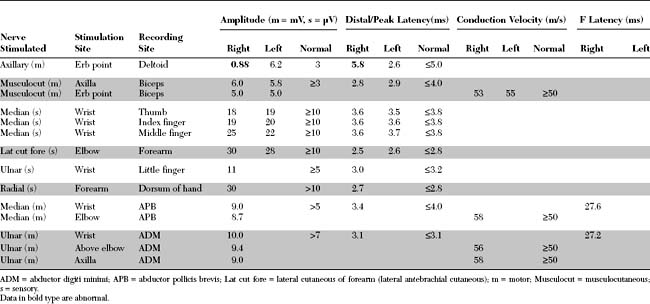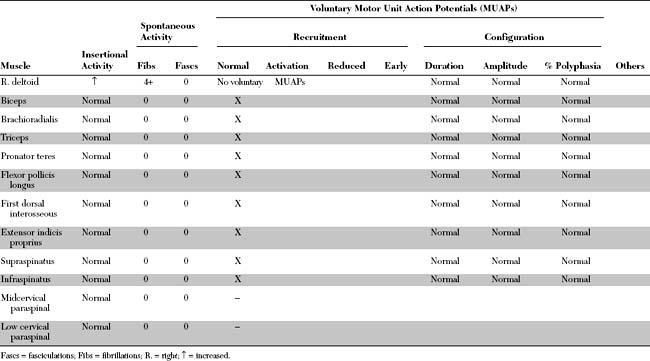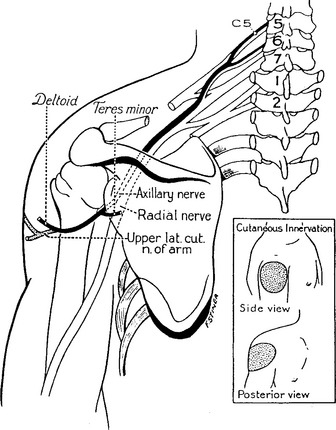Case 10
HISTORY AND PHYSICAL EXAMINATION
Please now review the Nerve Conduction Studies and Needle EMG tables.
QUESTIONS
EDX FINDINGS AND INTERPRETATION OF DATA
Pertinent electrodiagnostic (EDX) findings include:
DISCUSSION
Applied Anatomy
The axillary nerve (also called the circumflex nerve) arises from the posterior cord of the brachial plexus near the shoulder joint. Its fibers originate from the C5 and C6 roots and travel through the upper trunk to the posterior cord. The nerve has a very short path. It courses posteriorly, inferior to the shoulder joint where it traverses the quadrilateral space, bounded superiorly by the teres minor muscle, inferiorly by the teres major muscle, medially by the long head of the triceps muscle, and laterally by the humeral neck. At this point, the axillary nerve gives branches to the teres minor muscle and then it curves around the neck of the humerus, under the deltoid muscle. There, it terminates into two branches, one posterior and the other, anterior; both innervate the deltoid muscle. The upper lateral cutaneous nerve of the arm, which innervates the skin overlying the deltoid muscle (Figure C10-1), originates from the posterior branch.
Stay updated, free articles. Join our Telegram channel

Full access? Get Clinical Tree





